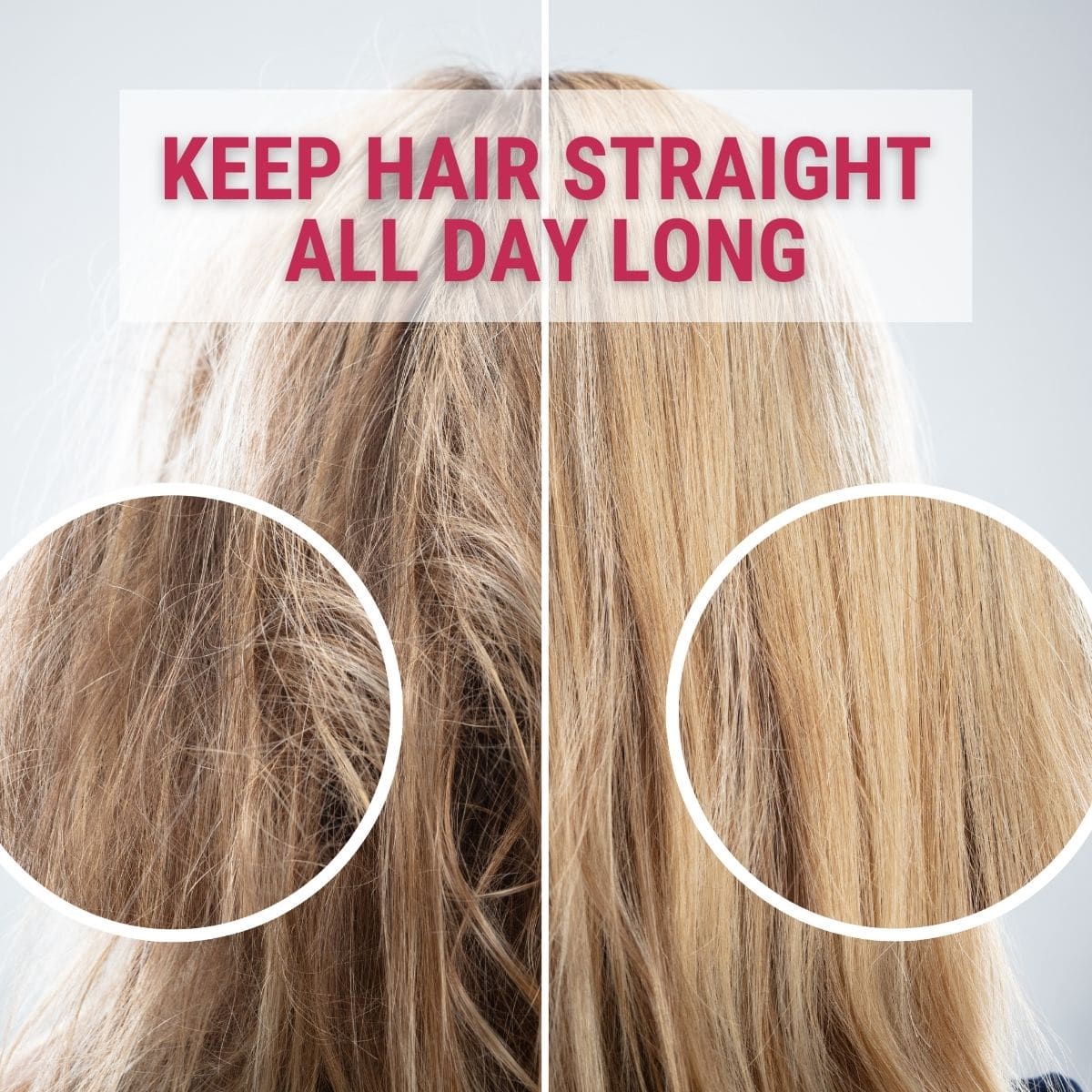In this article, you will learn some helpful tips on how to protect fine hair when using a hair straightener. We will discuss the importance of using heat protectant products, adjusting the temperature settings, and using the right tools and techniques to minimize damage. By following these tips, you’ll be able to achieve sleek and straight hair without compromising the health of your fine locks. Stay tuned for some expert advice on keeping your hair protected and gorgeous. If you have fine hair, you know that it can be a challenge to style and maintain. Fine hair is delicate and prone to damage, especially when exposed to heat. However, with the right techniques and products, you can achieve sleek, straight hair without causing harm to your fine strands. In this article, we will discuss the characteristics and challenges of fine hair, as well as provide tips on how to properly prepare, straighten, and care for fine hair. We will also share some hairstyle ideas and common mistakes to avoid.
Understanding Fine Hair
Fine hair is characterized by its small diameter and lack of volume. It often appears limp and flat, making it difficult to achieve and maintain desired hairstyles. Additionally, fine hair is usually more prone to oiliness and is easily weighed down by heavy products. Understanding the unique characteristics of fine hair will help you choose the right products and techniques to protect it when using a hair straightener.
Challenges with Fine Hair
One of the main challenges with fine hair is its fragility. Fine hair is more susceptible to breakage and damage from heat styling tools, such as hair straighteners. The high temperatures can weaken the hair shaft, leading to split ends and overall hair damage. Another challenge is maintaining volume and preventing flatness when straightening fine hair. It’s important to use the right techniques and products to preserve the natural volume of your hair while achieving a sleek and straight look.

Common Mistakes When Straightening Fine Hair
Before we discuss how to protect fine hair when using a hair straightener, let’s first address some common mistakes that people make. One of the biggest mistakes is using a high heat setting on the straightener. Fine hair is more prone to heat damage, so it’s important to adjust the temperature accordingly. Another mistake is not applying a heat protectant product prior to styling. Heat protectants form a barrier between your hair and the hot plates of the straightener, reducing the risk of damage. Lastly, neglecting post-straightening care can also lead to further damage. It’s important to cool down your hair, use a lightweight finishing product, and maintain hydration to keep your hair healthy.
Preparing Fine Hair for Straightening
Proper pre-wash care is essential when preparing fine hair for straightening. Start by gently detangling your hair using a wide-tooth comb or brush. Be extra gentle when dealing with tangles, as vigorous brushing can cause breakage. Once your hair is detangled, you can proceed to wash it.
When choosing a shampoo and conditioner for fine hair, it’s important to look for products specifically formulated for fine or thin hair. These products are usually lightweight and won’t weigh your hair down. Avoid heavy, moisturizing products that can make your hair appear greasy and flat.
After washing and conditioning your hair, it’s crucial to apply a heat protectant product. Heat protectants help to minimize heat damage by forming a protective barrier around the hair shaft. Apply the product evenly throughout your hair, focusing on the mid-lengths and ends, where the hair is most vulnerable.

Selecting the Right Hair Straightener
Choosing the right hair straightener is crucial when it comes to protecting fine hair. There are a few considerations to keep in mind when selecting a straightener for fine hair. First, opt for a straightener with adjustable temperature settings. This will allow you to customize the heat to suit your hair’s needs. Second, consider the plate material of the straightener. Ceramic and tourmaline plates are gentle on the hair and distribute heat more evenly. Lastly, look for a straightener with narrower plate widths. This will provide better control and allow you to be more precise when straightening fine hair.
Proper Techniques for Straightening Fine Hair
When straightening fine hair, it’s important to use the right techniques to minimize damage and achieve the desired result. Start by sectioning your hair into manageable sections using clips or hair ties. This will ensure that you can straighten each section evenly and avoid missing any spots.
When straightening each section, use gentle tension and slow passes. Avoid pulling or tugging on the hair, as this can cause breakage. Instead, use a gentle grip and slowly glide the straightener down the hair shaft. This will help to reduce the risk of damage and create smooth, straight hair.
Another important technique is to avoid excessive heat exposure. Instead of going over the same section multiple times, try to straighten each section in one or two passes. This will minimize the amount of heat your hair is exposed to, reducing the risk of heat damage.

Additional Tips for Protecting Fine Hair
In addition to the techniques mentioned above, there are a few more tips to protect fine hair when using a hair straightener. First, try to avoid straightening your hair daily. Fine hair is more prone to damage, so giving it a break from heat styling can help maintain its health. Instead, opt for heatless straightening methods, such as using rollers or braiding your hair overnight for natural-looking waves.
When using a hair straightener, consider using lower heat settings. Fine hair doesn’t require extremely high temperatures to straighten, and using lower heat settings can minimize the risk of damage. Start with the lowest heat setting and gradually increase if needed, but always be cautious and mindful of the health of your hair.
Post-Straightening Care for Fine Hair
Once you have finished straightening your hair, it’s important to give it some time to cool down before styling or touching it. This will help to set the straightened style and reduce the risk of frizz or reversion. Once your hair has cooled down, you can apply a lightweight finishing product, such as a serum or hairspray, to add shine and hold to your straight style.
Maintaining hydration is also crucial for fine hair. Use a hydrating hair mask or conditioner regularly to keep your hair moisturized and prevent dryness and breakage. Additionally, avoid excessive heat exposure from other styling tools, such as curling irons or blow dryers, as this can further damage your hair.

Hairstyle Ideas for Fine Hair
While straight hair is a classic and timeless look for fine hair, there are other hairstyle ideas to consider. Voluminous curls can add body and movement to your fine hair. Using a large barrel curling iron, wrap sections of your hair around the barrel and hold for a few seconds before releasing. Once you have curled your entire head, gently comb through the curls with your fingers to create soft, voluminous waves.
Another hairstyle idea is a sleek ponytail. Brush your hair back and gather it into a high or low ponytail, securing it with a hair tie. To achieve a sleek look, you can use a flat iron to straighten the length of your ponytail. Finish off the look by wrapping a small section of hair around the hair tie to conceal it and secure it with a bobby pin.
For a more casual and effortless look, consider textured waves. Start by applying a texturizing spray or mousse to damp hair. Then, loosely braid your hair and allow it to air dry or use a diffuser attachment on your blow dryer to speed up the process. Once your hair is dry, unravel the braids and gently tousle your hair to enhance the waves.
Common Mistakes to Avoid
To ensure the health and longevity of your fine hair, it’s important to avoid certain common mistakes. Using high heat settings on your hair straightener is one of the biggest mistakes you can make. Fine hair is more prone to heat damage, so always adjust the temperature to a lower, safer setting. Additionally, never skip using a heat protectant product before straightening your hair. Heat protectants create a barrier between your hair and the hot plates of the straightener, reducing the risk of damage.
Lastly, don’t neglect post-straightening care. Allow your hair to cool down before styling or touching it, and use a lightweight finishing product to add shine and hold to your straightened style. Also, make sure to maintain hydration in your hair by using hydrating hair masks or conditioners regularly.

Conclusion
Properly protecting fine hair when using a hair straightener is essential to maintain its health and achieve the desired style. By understanding the characteristics and challenges of fine hair, and following the right techniques and using the appropriate products, you can straighten your hair without causing damage. Additionally, by avoiding common mistakes and embracing the natural beauty of fine hair, you can achieve stylish, straight hair with care. So, with these tips in mind, go ahead and enjoy the beauty and versatility of your fine hair!





